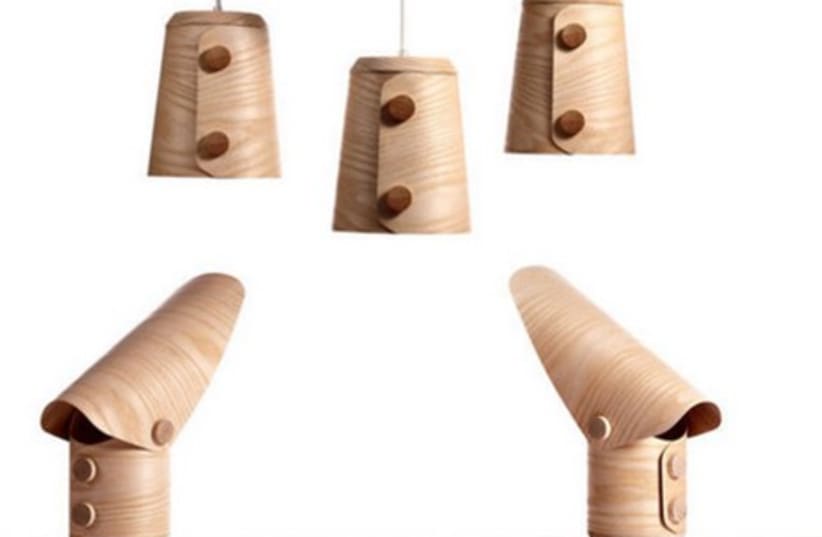

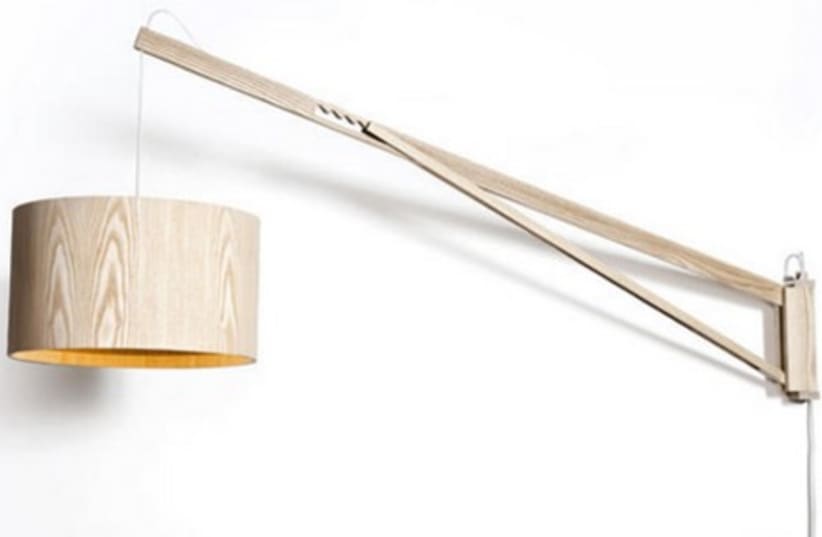
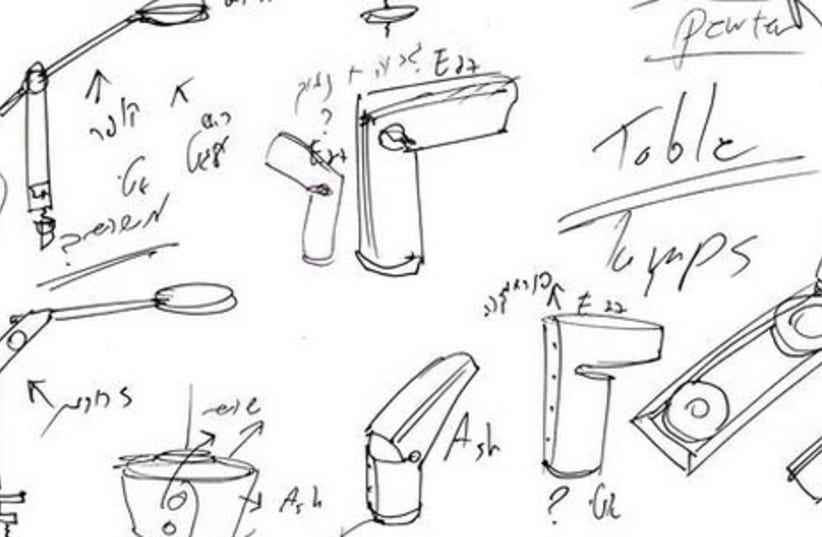
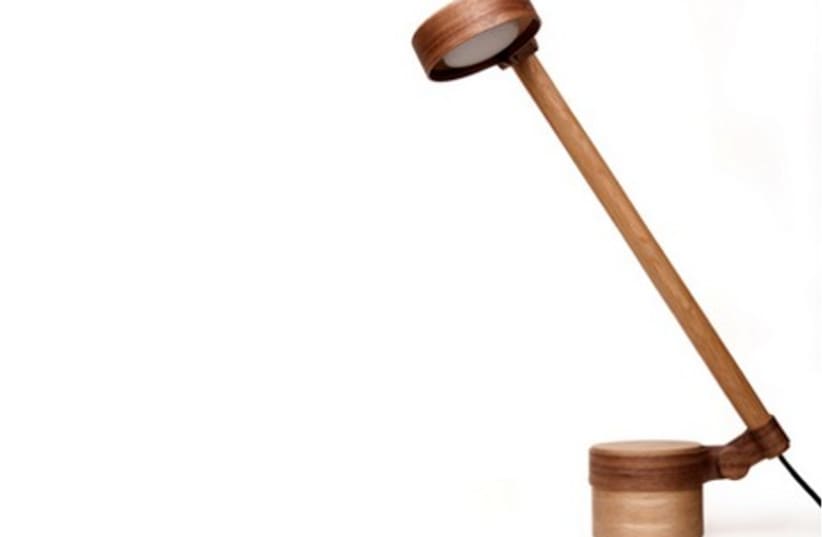
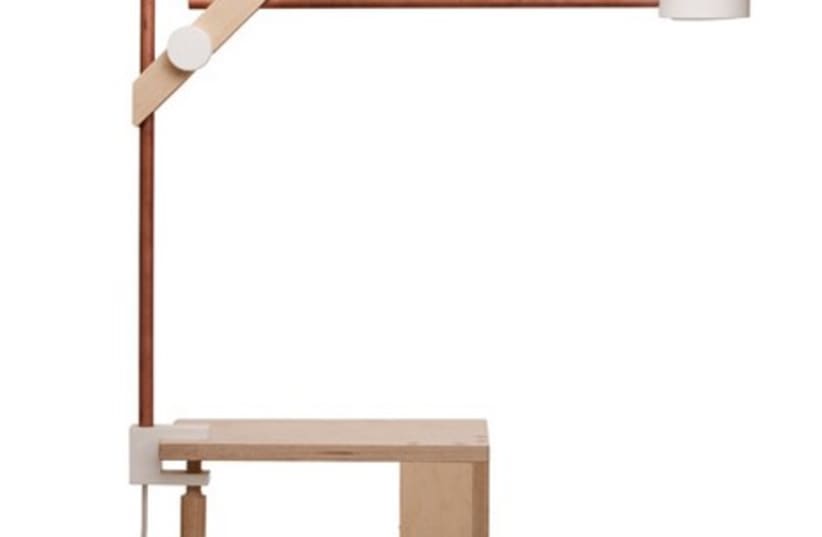



always had dreams of becoming a fashion designer. He applied for fashion studies at “Shenkar” academy but the admission committee thought a better place for him would be the industrial design department.Their loss is our gain as now we can all can enjoy the work of a great industrial designer who is inspired by the world of textile and fashion. In his tiny workshop, and with his own two bare hands Asaf produces, the most minimalistic yet smart wooden light fixtures.Who would have known that wood can be transformed to these extra elegant pieces of art. His precise choice of texture and density as well as his magic touch make him one special designer who for sure will amaze us in the years to come.And to think it was all written in the stars for him like his grandfather before him.Can you tell me a little bit about your background? I grew up in a religious family in Rishon Lezion and studied in a few religious institutes that didn’t have any art or design related classes.As a child I remember myself taking cars and other toys apart because I was curious to discover what’s going on inside.When my mom was younger, she dreamed of studying design and fashion at Shenkar but followed her parent’s advice and turned to a more “prestigious” course. So, when I decided I wanted to peruse a design career, she obviously was happy with it and was very supportive.When did you first decide that you wanted to become a designer? When I was released from the army, I began looking at schools in the design field. I wasn’t sure if it was going to related to fashion, interior design, textile or industrial design. I tried but didn’t get into the fashion department in Shenkar and I didn’t really know what industrial design meant at the time.A year later, I signed up for fashion studies as well as industrial design and as it turned out I got accepted to the industrial design department. During the exams I felt as if I found the right profession that would definitely suit me.Where do you live, what stands out about living where you are, and how does it affect your creations? At the moment I live in Tel Aviv but I don’t feel like the city affects me or my creativity. When you look at my work, you can sense European influences because of the use of wood and thin veneers. I think that with all the amazing design oriented websites updating so rapidly it is hard to find design which is typical for a specific region.Tell me about your process, what is your typical working method? Do you sketch things out by hand or go right to the computer?I always begin with rough sketches and try to iron out all the technical issues at the beginning. Sometimes the concept folds out smoothly and when it doesn’t I let it go and move on. I believe that a good concept has to immediately pop out.If I need to involve technological aspects such as laser cutting or machining I turn to the computer, otherwise I move straight to the workshop and build the first model. I believe that working with a computer can be misleading and you should always work manually. Most of the time the screen can be deceiving and to come up with the right proportions you have to see and sense the product itself.I know it’s probably hard to pick, but do you have a favorite piece? It has to be the light fixture from my first series, the “Gardom Light.” It’s my favorite because of it’s simple mechanism and smooth movement. It has a volume and height that draws attention and a logo that reminds me of a crane that lifts a lampshade.What are some of your methods of staying motivated, focused, and expressive?I have a constant burst of creativity that keeps me thinking of new objects and combining new mechanisms and technologies. The minute an idea pops into my head, I have to run with it, and by then a new product is born.What are your sources of inspiration? I like to stare at old cars; they have lots of mechanisms and junctions that you can’t find anymore today. It all disappeared underneath modern plastics.Other than that, there are a lot of fashion web sites which highlight the interesting connection between fashion and industrial design. For my light fixtures I often use buttons that are inspired by old coats.Could you share with us your progression as an artist, compared to when you first started out, how have you changed since then? When I finished school, I knew I was full of ideas that I could turn into finalized products. I decided to focus on lighting. The first and second series came from my gut, disregarding any kind of business or commercial aspects. My last series and the ones I’m working on at the moment, evolved from a gut feeling but are also influenced by production, packaging and sales perspectives.These aspects are important and I learned from experience they can’t be ignored. Other than that, I’m working with a personal coach, and together we think long and hard about what my next step will be. In school, they don’t teach you how to run a business and most of the designers aren’t born with a business sense.What advice do you have for young designers who want to follow your path? You should focus on one thing that you are good at, and in time you’ll be an expert in your field. Always ask for the help of businessmen and learn from them.What has been one of the biggest lessons you have learned since starting out? Whenever you get an opportunity to showcase your design, grab it with open arms. You never know who will open the paper or show up at a gallery that you are presenting in.Where do you see yourself within the next few years? I plan on transforming my own workshop into a small factory that will produce hand made light fixtures and furniture and will be well known worldwide. In addition, I hope to keep presenting every year in the Milan design week and form new contacts and relations.Do you listen to music while you work? What’s playing in your studio right now? I listen to 88Fm or 106FM. They have some interesting choices when it comes to music.If you weren't a designer, what would you be? An actor or a dancer.What are you working on at the moment? I’m working on two new series that combine wood and metal and soon my first solo exhibition is going to start.Finally, tell us something no one knows about yourself.My grandfather survived the Holocaust thanks to his outstanding technical skills. He was beneficial to the system and therefore survived. I inherited those skills and use them to build and design lamps.Read Einat’s blog and follow her designed journey at http://www.designbreakonline.com/
